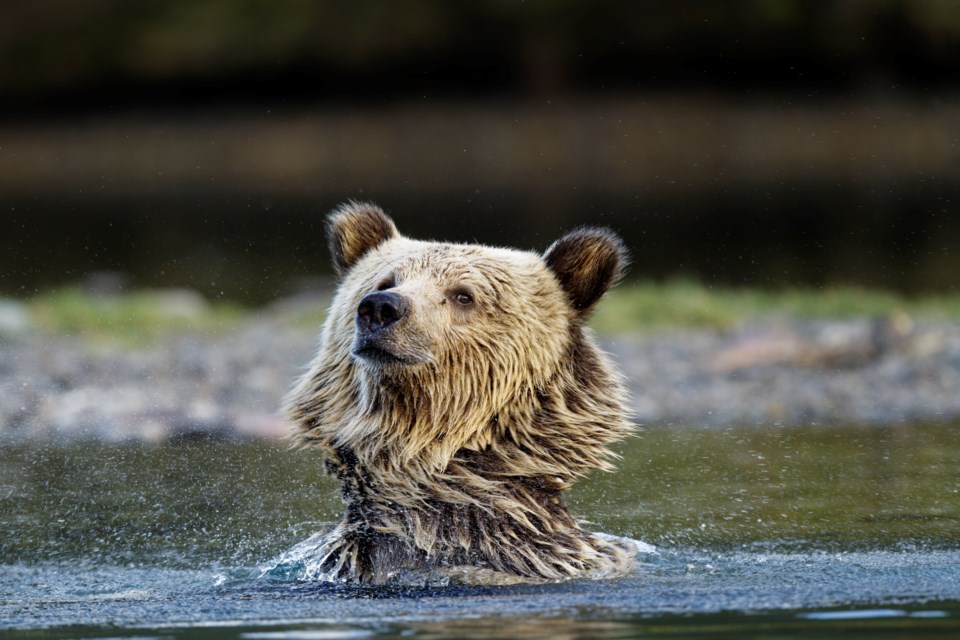When Musée Heritage Museum opened its main exhibition space this past Tuesday, it was flooded with wildlife images photographed in western Canada.
St. Albert photographer Dave Conlin showcases The Wild Side: Polar Prairie Pacific. It is a stunning collection that captures fascinating animal behaviour, spectacular species in private moments and the breathtaking diversity of the natural world.
Conlin’s 39 photographs document animals’ daily lives as they hunt for food, avoid predators, mate, nurture their young, fight, play, rest and survive the seasons. He captures a mother grizzly teaching her cub to fish for salmon, a curious coyote, a startled moose and playful wolf cubs.
From coyotes foraging on St. Albert’s open landscapes and bison herding calves on Alberta’s grasslands to protective grizzlies in northern British Columbia and sea lions jumping off Vancouver Island’s rocky shores, the collection tells important stories and advocates for a future that respects the animal kingdom.
In moving from photograph to photograph, the collection encourages curiosity, wonder and connection. In addition, the images convey the human impact on the natural world, especially with declining biodiversity and protected species.
Conlin’s photographs taken around St. Albert and Sturgeon County are obtained on walks with his dog. But when travelling in British Columbia or Manitoba, he chooses to invest in knowledgeable guided eco-tours who obtain special licenses to operate regulated photography tours.
His mission while photographing the incredible mammals in Canada, is to redress the lopsided balance of mammals living on the planet. Booking eco-tours instead of heading into wild territory alone is both safer and less destructive to the environment.
“Did you know that only four per cent of mammals on the planet are wild? The other 96 per cent are humans and livestock,” said Conlin. “Every time I take a picture, I’m taking something from nature. I might be stepping on a flower or blowing CO2 in the environment. As a photographer, I have to be careful what I take out. But I try to put something back and I’d like to encourage people to think about what they do.”
Through the collection, Conlin explores forests, frozen tundra, wetlands and shorelines. Although he began his photography hobby in 2001 with a Canon S40, he now favours the Nikon D500.
“Nikon’s feel in my hands and the way the controls are laid out are perfect for me. I’m used to the system – the colour and the picture quality. It works for me.”
He has photographed the rare, white-coated black bears also known as Spirit Bears in British Columbia’s Great Bear Rainforest. While travelling in a zodiac, he’s taken images of a herd of sea lions lounging in the sun. And he’s had the opportunity to encounter a wolf family frolicking on a shoreline.
However, not all eco-tours are smooth. On his first tour of the Khutzeymateen Grizzly Bear Sanctuary riding in a boat, a group of photographers were eager to capture images of a mother grizzly and her cub walking near the tree line.
“The cub decided we were a curiosity and came towards us. I was at the front of the boat. We were grounded and at this point the guide decided to push off and jumped out of the boat. Since the cub kept coming, I ducked to the bottom of the boat thinking the mother would come after her cub. But the mum gave a huff and the cub walked off.”
Museum curator Martin Bierens is a strong supporter of Conlin’s work, not only because the composition is breathtaking. But also due to the conservation message.
“Right now, we have many animals around us, but there’s no guarantee they will be with us forever. We hope viewers will think about how we can better conserve these animals ... and support them while we all live in harmony,” Bierens said.
To complement The Wild Side: Polar Prairie Pacific, the exhibition introduces three of the museum’s stuffed animals: a bear, wolf and porcupine.
Conlin is also hosting a talk on wildlife photography at the museum on Saturday, March 9 at 3 p.m. It will centre around photography of the Big Lake area. It will be followed by a Q&A.
In addition, he will host a series of photography tours around Lois Hole Provincial Park on April 20 and 27, May 4, 11 and 18 from 8 a.m. to 11 a.m. Preregistration is required. Visit www.artsandheritage.ca.




